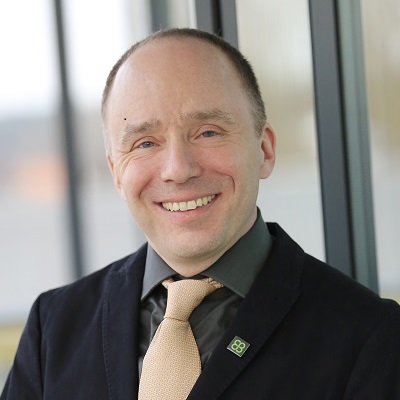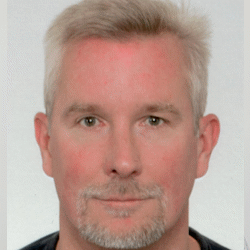
What happens when a beautiful centuries-old city becomes the backdrop for the future of mobility? In late May, the 16th AUTOSAR Open Conference (AOC) gathered automotive software leaders in Bruges, Belgium, a place known for its canals, cobblestones, and now, conversations about software-defined vehicles (SDVs).
The picturesque setting offered more than its consistent charm; it gave contrast. Old-world architecture met cutting-edge innovation. And for two days, members of the AUTOSAR community came together to discuss everything from high-level strategy to low-level implementation, exploring the direction of automotive software in a global sector that’s rapidly redefining itself.
Strategy, standards, and the evolving SDV stack
The plenary sessions opened with a wide-angle view. From the European Commission’s emphasis on the strategic importance of automotive to Europe’s digital autonomy, to the unveiling of new AUTOSAR initiatives, it became clear: SDVs aren’t just a technical challenge, they’re a political and economic imperative.
A highlight was the introduction of the Common AUTOSAR Platform Implementation (CAPI), a source-level reference implementation of the Adaptive Platform. Yet, this milestone also surfaced uncertainty: How will AUTOSAR’s roadmap interact with open projects like Eclipse SDV’s S-Core? That relationship, it seems, remains unresolved; and a critical one to watch.
Real-world transformation stories brought the conversation down to earth. One leading OEM shared how their journey toward SDV readiness required more than new technology. It demanded organizational transformation, aligned workflows, and a fundamental shift in mindset. The payoff? A next-generation SDV platform that’s now ready for the road.
Trends shaping tomorrow’s stack
Beyond the plenaries, the technical sessions gave attendees a glimpse into where automotive software is headed next.
Industry organizations are stepping up to fill gaps and accelerate innovation. SOAFEE, for example, has transitioned into a forum for industrial collaboration, now focused on delivering “blueprints” to help developers understand and deploy cloud-native SDV architectures.
JASPAR is aligning with COVESA’s Vehicle Signal Specification (VSS), aiming to standardize APIs through open source. And Khronos Group demonstrated how SYCL enables standardized access to hardware accelerators from within Adaptive AUTOSAR; a crucial piece in the SDV performance puzzle.
Whether the topic was CPU load metrics or standards for hardware acceleration, a common theme emerged: performance, compatibility, and trust must be built into the system from the ground up.
Elektrobit’s contributions: forward-looking and hands-on
Three presentations from our team added depth to the conference’s most future-facing conversations.
In one hands-on session, a demo showed how Rust applications can be integrated with EB tresos AutoCore, signaling the growing relevance of modern programming languages in traditionally conservative embedded environments.
This integration not only highlights the shift toward safer and more efficient development practices but also underscores the increasing importance of cybersecurity in the automotive domain. Rust’s memory safety guarantees and strong type system make it a compelling choice for reducing vulnerabilities in critical automotive software. By minimizing runtime errors and enabling more robust code from the beginning, Rust can help streamline validation efforts, reduce costs, and accelerate time-to-market, benefits that are increasingly essential in the race to deliver software-defined vehicles.
Another presentation made the case that SDVs cannot succeed without software-defined networking. As compute gets distributed and functions become more dynamic, the in-vehicle network must evolve too, not just in speed, but in intelligence.
And a third talk explored what it really takes to make open-source software safe for automotive use. Using EB corbos Linux for Safety Applications as an example, the presentation outlined a path toward certifying community-driven codebases for critical applications like ADAS and automated driving.
Each talk pointed to a larger message: innovation in automotive software isn’t theoretical anymore. It’s practical, it’s urgent, and it’s happening now.
Between sessions: questions that still need answers
Like many conferences, the most interesting questions weren’t always asked on stage. They emerged in side conversations; about trust models, traceability, cross-ecosystem collaboration, and how regulatory environments might shape software sourcing in the years ahead.
As SDVs become more complex, it’s not just the code that needs to evolve. Processes, partnerships, and even definitions of compliance are all in flux. These hallway discussions may foreshadow the next wave of priorities for the AUTOSAR community and beyond. We’ll all see.
Final thoughts: Building the future requires common ground
The AUTOSAR Open Conference 2025 made one thing clear: SDVs are forcing the automotive world to re-architect not only software stacks, but ways of working. It’s no longer enough to optimize within silos. Automakers, suppliers, and technology providers must align across ecosystems, languages, and layers of the stack.
Bruges was bustling. And after several days of technical deep dives, spirited debate, and collaborative insight, one truth stands out: the SDV future isn’t something we’re waiting for, it’s something we’ve been building.





